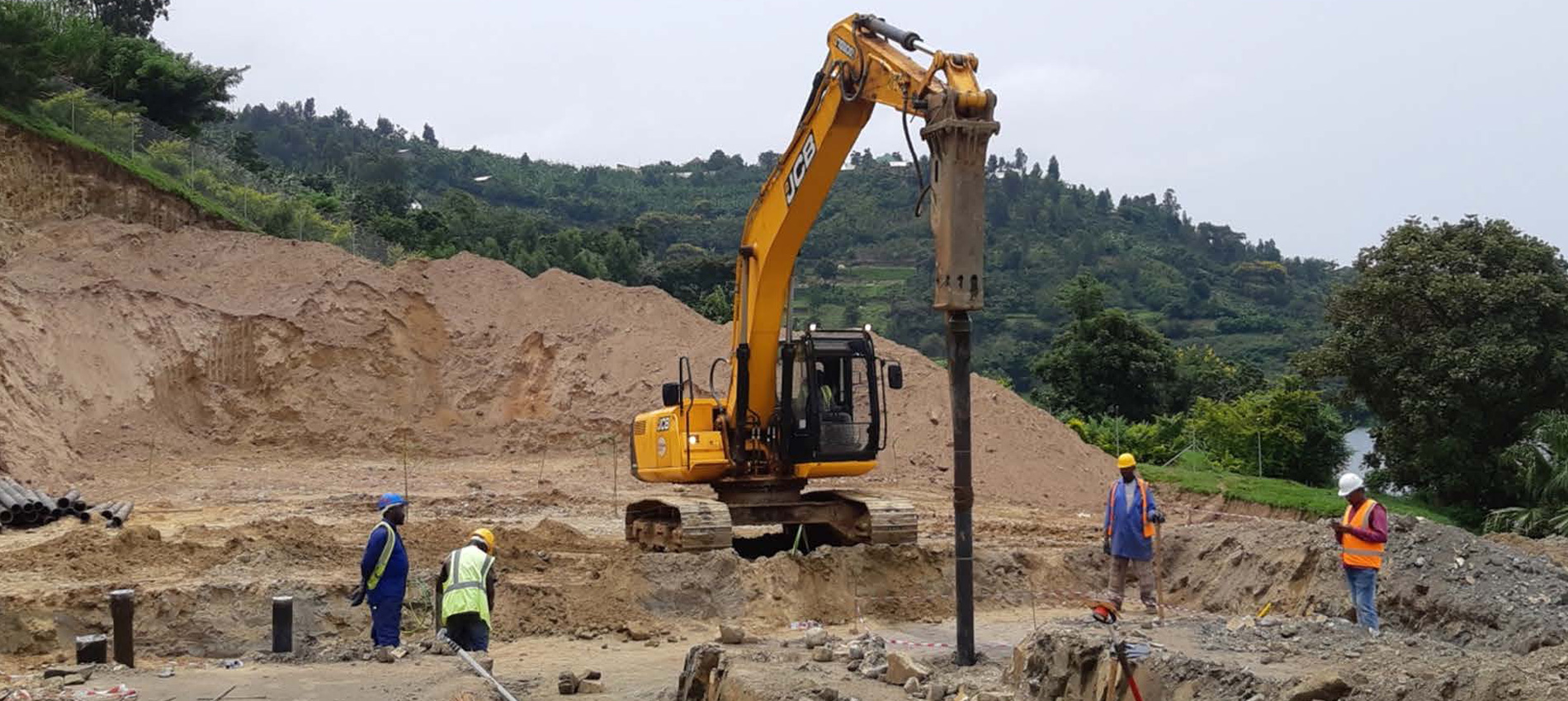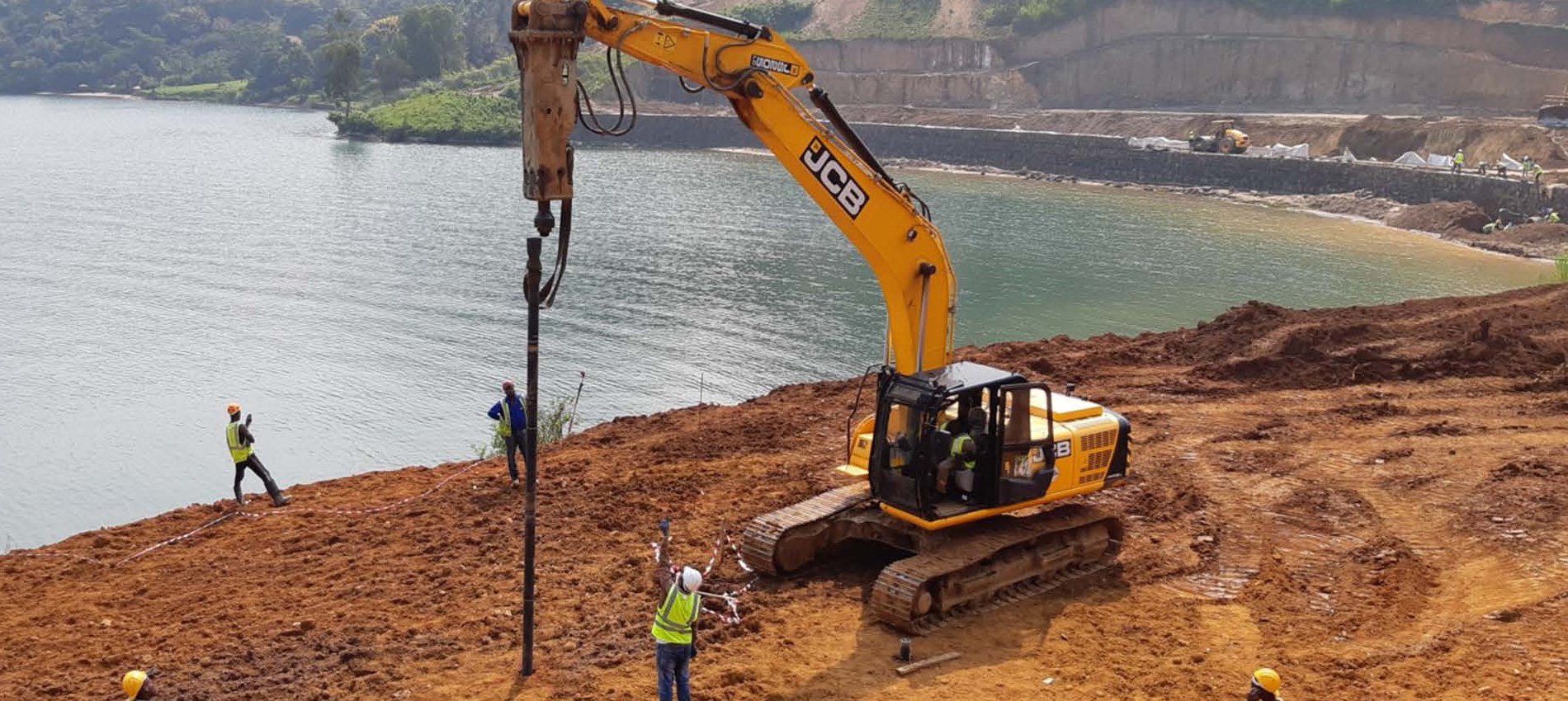The Lake Kivu K56 Methane to Power Project is part of a large-scale energy generation concept in the far west of Rwanda on the border with the Democratic Republic of Congo. With water depths of up to 480 m and the volcanic springs underground, Lake Kivu is unique in the world. The Lake Kivu K56 Project comprises the construction and operation of a 56 megawatt methane power plant, which converts methane, which occurs in large quantities in the lake from depths of 250 meters, into energy. The principle of the power plant works in such a way that the methane and CO2-containing water is extracted from depths of over 300 m, which separates the methane from the water and uses it to generate energy. The used water is returned to the lake.
In addition to the large-scale infrastructure work and civil engineering structures such as the machine house, the removal structures (WWT base) and the flare tower be deep founded. The decision was made in favor of the TRM piling system - particularly due to the very inhomogeneous geology with very different foundation horizons. Unpressed uprights in the dimensions TRM 118 / 10.6 and TRM 170 / 10.6 were used. The unpressed uprising pile from Tiroler Rohre GmbH is rammed to a rock or rock-like uprising horizon that can be found at a reasonable depth during manufacture. A pile uprising is achieved when the pile makes no or only little progress when the hammer is fully loaded. In addition to optimizing Rwandan energy generation (60-70% is currently generated by diesel generators), the project also prevents methane oversaturation of Lake Kivu, which would ultimately lead to a catastrophe (see Nyos Lake Catastrophe 1986).
Fast. Simple. Safe.
www.trm.at


